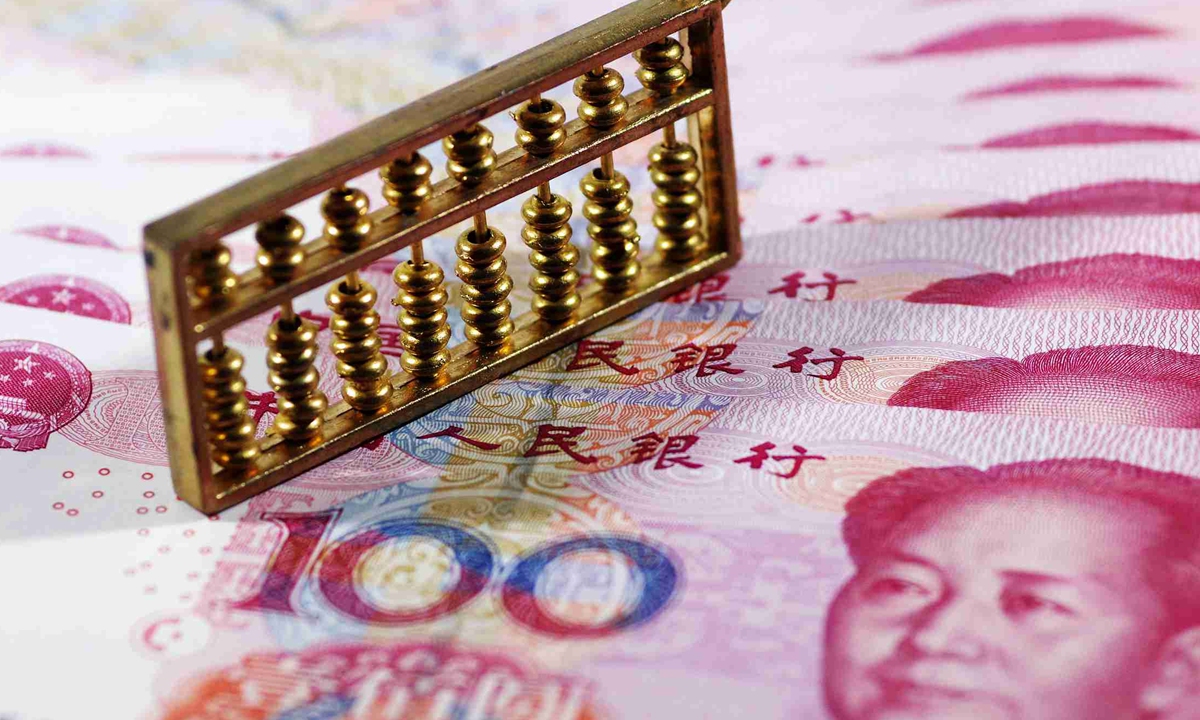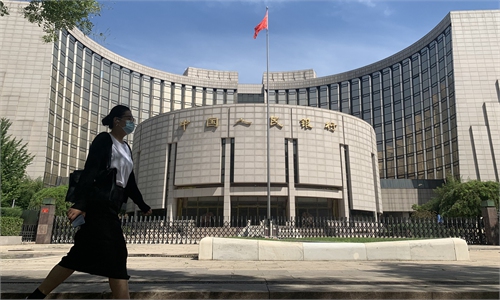
Chinese yuan Photo:VCG
The yuan has remained largely stable despite short-term downward pressure, while positive factors including China's economic rebound and a possible end to US interest rate hikes may boost the yuan to about 6.8 per dollar by the end of 2023, analysts said.
The central parity rate of the yuan fell 171 basis points to 7.1075 against the US dollar on Tuesday, according to the China Foreign Exchange Trade System, the lowest since December 1, 2022.
The yuan's central parity rate has dropped more than 2,000 basis points since May, public data showed.
The onshore yuan stood at 7.1059 as of 2:30 pm on Tuesday, while the offshore yuan weakened to 7.13 during intraday trading.
"The US Federal Reserve has conducted 10 interest rate hikes since it began policy tightening in March 2022, while China has maintained comparatively low interest rates. There is much divergence between the two countries' monetary policies, which is a main cause of the yuan's depreciation," Yang Delong, chief economist at Shenzhen-based First Seafront Fund Management Co, told the Global Times on Tuesday.
He said that other factors such as the weak Chinese economic recovery in April and May also had some impact on the yuan, but there is no basis for a continuous depreciation of the currency, which fluctuates within a reasonable range.
Guan Tao, global chief economist at BOC International under Bank of China, told the Global Times on Tuesday that the yuan was basically stable against other major currencies in the first five months of the year.
"Given the easing of COVID-19 measures and the impact of that move on the Chinese economy, and greater room for China's fiscal and monetary policies than the US and the EU, the momentum of China's recovery remains unchanged despite some headwinds. This will serve as an important basis for the stable operation of the onshore and offshore foreign exchange markets," Guan said.
China's economy remains on the course of recovery. Retail sales grew 18.4 percent in April, hitting the highest level since March 2021. The industrial added value of major industrial enterprises rose 5.6 percent, accelerating from 3.9 percent in March.
Guan said the two-way fluctuations of the yuan will have limited impact on the financial market, as there has been no large-scale net outflow of capital from the A-share market.
"Boosted by economic gains, positive factors will accumulate and set a solid foundation for the stable operation of the stock market," he said.
After the yuan breached the 7-per-dollar psychological threshold on May 17, the People's Bank of China, the central bank, on May 19 vowed to better guide expectations in China's foreign exchange market and resolutely prevent drastic fluctuations in exchange rates.
"Efforts will be made to correct pro-cyclical and one-way market swing in order to curb market speculation," it stated.
The US Dollar Index, which measures the currency against a basket of six other currencies, may lose steam amid an end to the Fed's tightening cycle, while market expectations for a turnabout in the Fed's monetary policy may lead to a fall in the dollar, according to a research note by analysts from China International Capital Corp (CICC).
The yuan is now undervalued. In the medium to long-term, the regained pace of the Chinese economy and turnabout in the Fed's policies will help boost the yuan's value, and the yuan is expected to strengthen to 6.7 to 6.8 per dollar by the end of 2023, CICC predicted.
Global Times



